
Noji Onsen
Noji Onsen is a beautifully scenic onsen resort in Adatara mountains. It is especially breathtaking when the outdoor baths, and their cloudy white waters, are surrounded by stunning snowy landscapes in winter.
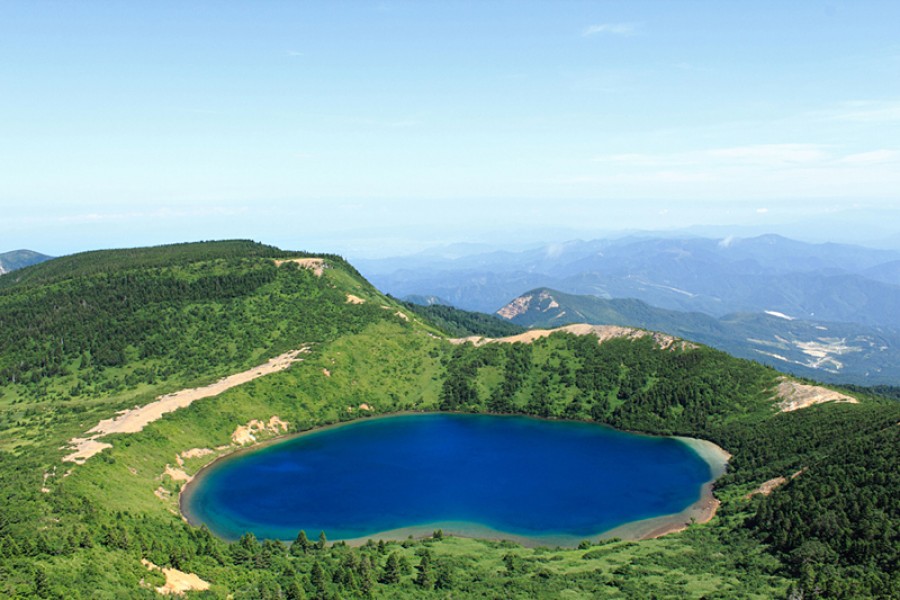
Majyo-no-hitomi, or The Witches’ Eye Lake, is a volcanic lake that was formed during a volcanic eruption many years ago. Unique minerals in the water cause the lake to appear different colors, giving the lake it’s official name of Goshiki-numa (Five Colored Lake), but most often it is a bright blue.
The nickname of “Witches Eye” comes from the unique appearance of the lake that is visible in late spring when the snow melts enough so that only a white ring remains around the lake to form the white of what appears to be an enormous single eye.
This lake viewpoint can be reached by an intermediate hike that begins at the Jododaira Visitors Center, stop by for a map and safety information before hiking.
| Website | https://fukushima-guide.jp/discover/jododaira/ |
|---|---|
| Contact | Jododaira Visitor Center (+81) 24-563-5554 fukushima.guide@f-kankou.jp |
| Best Season |
|
| Opening Hours | Closed during the winter (closing coincides with that of the Bandai-Azuma Skyline road) |
| Parking | Jododaira Parking Area (Paid parking) |
| Related info | Best season: June-October |
| Access | Washikurayama 1, Tsuchiyu Onsen-machi, Fukushima City, Fukushima Pref. 960-2157 View directions |
|---|---|
| Getting there | By Car: 1 hour drive from the Fukushima-Nishi I.C. exit off the Ban-etsu Expressway |

Noji Onsen is a beautifully scenic onsen resort in Adatara mountains. It is especially breathtaking when the outdoor baths, and their cloudy white waters, are surrounded by stunning snowy landscapes in winter.
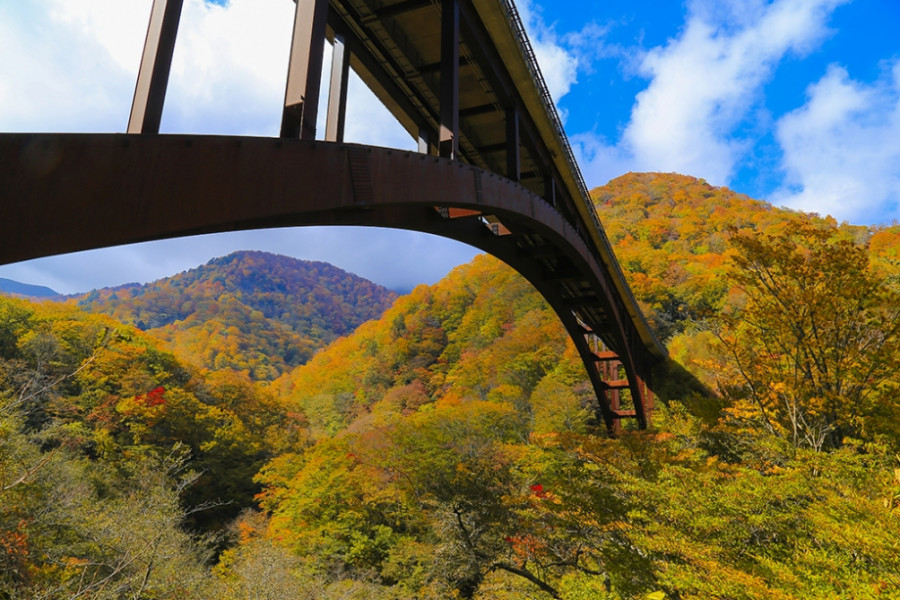
Nishigo Village is truly blessed with breathtaking scenery and view spots, such as Kashi-Ohashi Bridge.Kashi-Ohashi Bridge stretches for 199 m against a backdrop of mountains, colored with fresh spring greenery or bright red leaves, depending on the season. Home to the water source of the Abukuma River, and filled with primeval forest trees, the beauty of Nishigo Village area was even praised by the feudal lord Matsudaira Sadanobu in centuries gone by. A bridle path has been constructed near Kashi-Ohashi Bridge, and lots of hikers come to visit every summer and autumn.

Off the beaten track, Mt. Kohata’s Okitsushima Shrine is a perfect spot for those searching for a peaceful, spiritual place to visit. The shrine’s story – Date Masamune burned down Mt. Kohata in order to dominate the area during the Tensho Era (1563-1593), but couldn’t destroy the shrine’s three-storied pagoda – makes the area even more special. The three main goddesses of Shintoism – whose names are Princess Tagori, Princess Tagitsu, Princess Ichikishima – are worshipped at this shrine. These three goddesses are thought to be the daughters of the sun goddess Amaterasu, the major deity in the Shinto religion. It is not only Shintoism which is practiced at this shrine, but also Buddhism. In particular, the Japanese Buddhist goddess known as ‘Benten sama’ is worshipped on Mt. Kohata. Despite the turmoil which engulfed faith in Buddhism which occurred during the Meiji Era, strong faith in Benten sama – the Buddhist deity of peace, good luck, wisdom, and marriage – continues to this very day. Kohata Flag Festival, which has been designated as an Important Intangible Folk Cultural Property of Japan, is held annually on the first Sunday of December at Mt. Kohata.
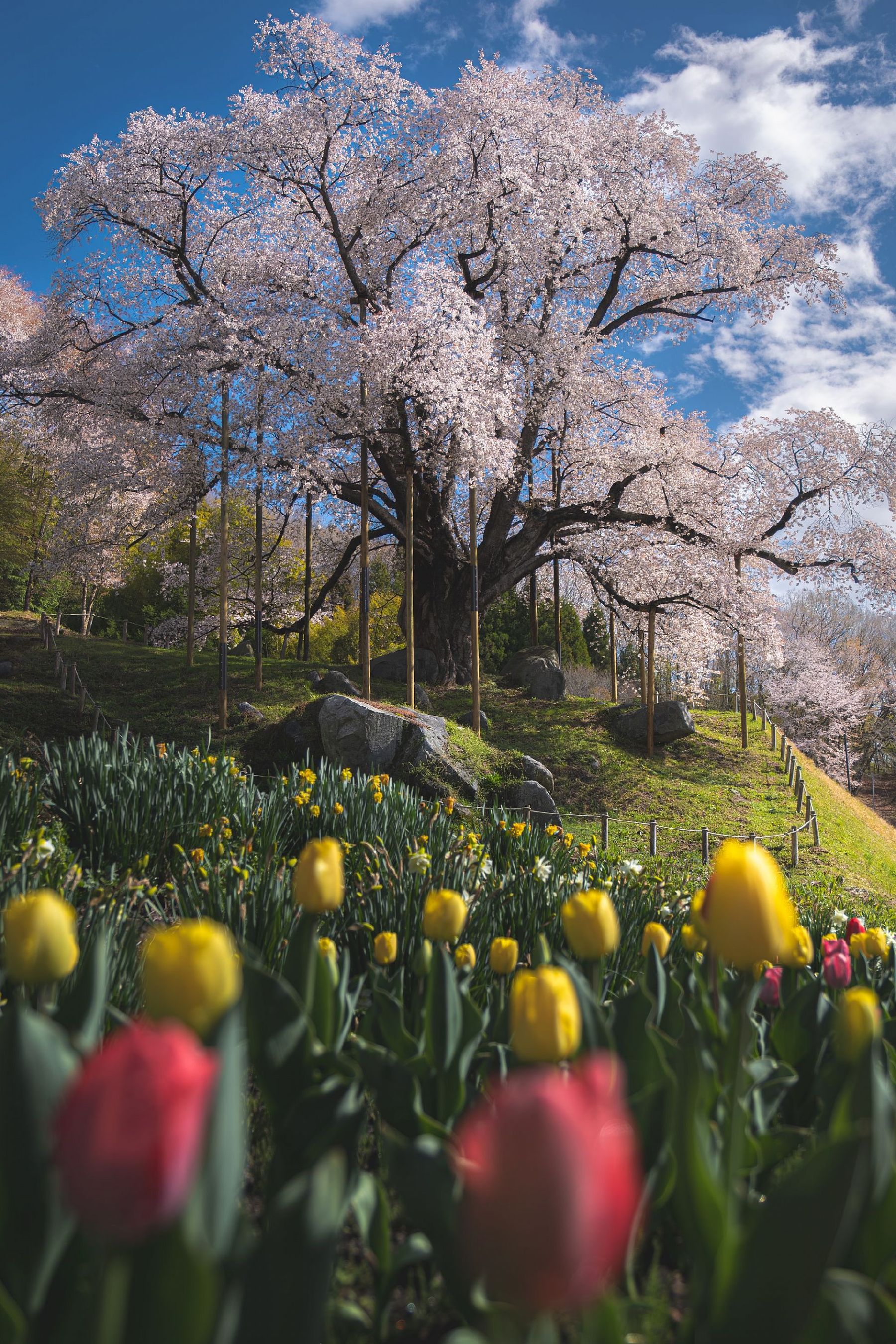
This huge Japanese cherry tree is over 400 years old and has been designated as a national Natural Treasure. The tree has a trunk circumference of about 7.2 meters and stands 20 meters high, and was thus selected as one of the "100 Giants of the Forest" by Japan's Forestry Agency. Koshidai Cherry Blossom Festival is held every year on May 3. A Yabusame horseback archery event accompanied by taiko drumming takes place during this festival, and local organizations set up food stalls.Photo tip: Try taking photos from the south side of cherry blossoms.

Mt. Shinobu, with a total altitude of 275 meters, is one of the landmarks of Fukushima City. It is estimated that it formed about 500.000 years ago when the Fukushima basin caved in and Mt. Shinobu became an isolated hill, which later became the object of multiple local poems, stories, and legends.Visitors can hike up Mt. Shinobu for unobstructed views of the cityscapes. Hikers of all levels can try climbing Mt. Shinobu, as its peak can be reached in a few hours and many parts of it can be reached by car.Each year in April there is a spring festival with cherry blossom night illuminations that attract hordes of visitors. Summer and autumn are also great times to follow the hiking routes at Mt. Shinobu.A spiritual power spot for locals, Haguro Shrine can be found at the top of the central peak, where there is also a giant straw sandal that weighs about 2 tons and is 12 meters in length and is believed to be among the biggest in Japan. The sandal is paraded along Fukushima City each year in August during the Waraji Festival. Also in Mt. Shinobu, you can find the Shinobuyama Neko Inari Jinja(‘cat shrine’), and the Gokoku Shrine, along with several parks.For stunning views of the city, including the Shinkansen bullet train tracks, head to the Karasugasaki Observation Deck on the western side. Located nearby are the Fukushima Prefectural Museum of Art and the Fukushima Prefectural Library. @Redicoverfukushima
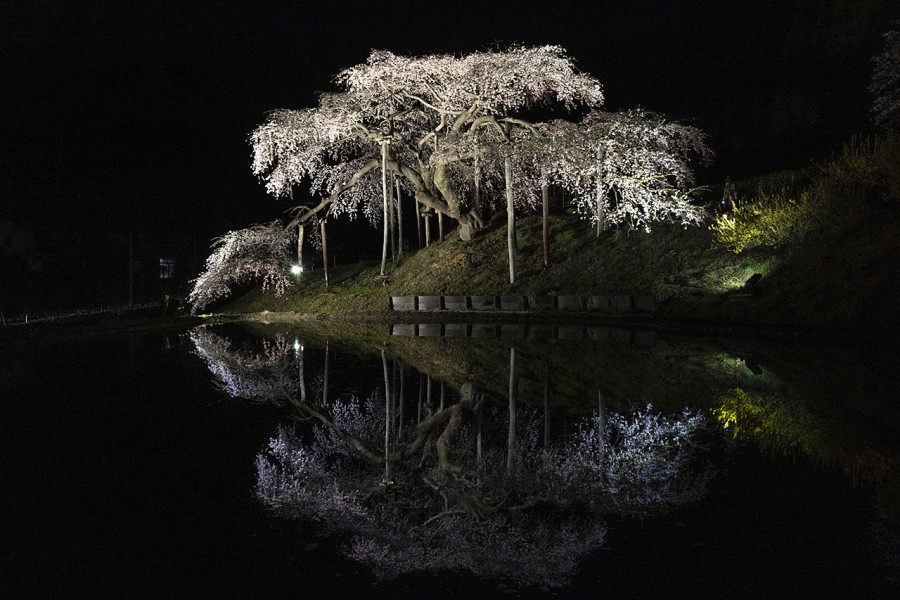
In spring, this 150-year-old weeping cherry tree looks so different from one hour to the next. Viewed during the day, it is framed against a backdrop of snow-topped Azuma mountains. During the cherry blossom viewing season, Nakajima Jizozakura is lit up at night, its reflection glittering enchantingly on the surface of surrounding rice paddies.

This sightseeing road that runs from Fukushima City's Takayu Onsen to the Tsuchiyu Pass, commanding panoramic views of the surrounding landscape.The spectacular views that stretch out at an average altitude of 1,350 meters attract visitors time and time again, and Bandai-Azuma Skyline has been selected as one of the 100 Best Roads in Japan.In spring, tourists can enjoy flower viewing while at the same time taking in the otherworldly winter scenery of the "Snow Corridor".In summer, the Nemoto Shakunage (Rhododendron brachycarpum), a species of alpine rose, and other alpine plants display their colorful flowers and fresh, brilliant green leaves. During autumn, the drive warms as roads become enclosed by fiery seasonal leaves.There are also many hot springs in the vicinity of the Skyline where visitors can enjoy a bath and relax stiff muscles while out on a daytrip.The roadway passes next to the crater of Mt. Azuma-Kofuji. Visitors can easily park their car at the nearby guest center and enjoy a short hike up to the crater’s rim.The Bandai-Azuma Skyline Roadway has been selected as one of the top 100 roads in Japan, and unlike many others, this one is free to use. There are rest stops along the way for the hungry traveler; the most popular is Jododaira, as it’s home to a rest house and an observatory.Be sure to plan ahead though, from mid-November to early April the roadway is closed due to heavy winter snowfall.
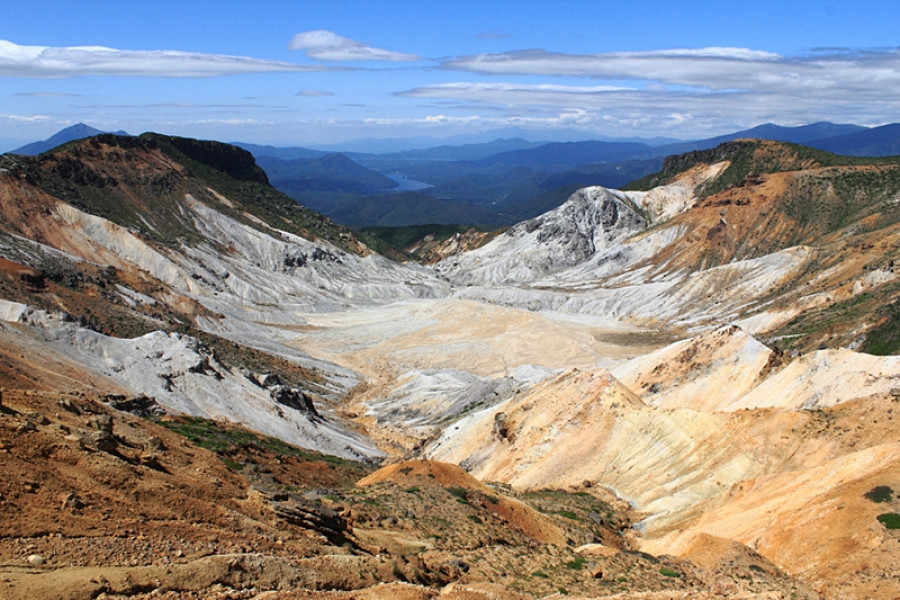
Mt. Adatara is actually made up of multiple active volcanoes that form a broad mountain. It last erupted in 1996. Poems in the book Chieko-sho by Kotaro Takamura (1883-1956) helped make the mountain famous.The summit of Mt. Adatara stands at an altitude of 1700 m, stretching about 9 kilometers in a north-to-south direction. Views of Mt. Adatara are lovely in and of themselves, but the views that visitors have of the surrounding area once they reach the summit are breathtaking. Chosen as one of Japan’s top 100 mountains, as well as one of the top 100 mountains for flowers, a view spot at an altitude of 1300 m can be accessed by gondola lift. This means that it is relatively easy to climb even for beginners.On summer evenings, a light-up event inspired by the Milky Way and the flowers of Mt. Adatara is held, gracing those scaling the mountain by a gondola lift with a spectacular view. In autumn, visitors are afforded a stunning view of autumn leaves making it a popular place for scenic momiji-gari (autumn leaf viewing).Kurogane-goya Mountain Lodge (temporarily closed as of August 2023) is a rest stop for visitors (it serves as lodging for those on long hikes). Stay here overnight to sample the lodge's famous curry, which is reserved for overnight guests only. The lodge’s public hot spring facility uses naturally-sourced, cloudy hot spring water.